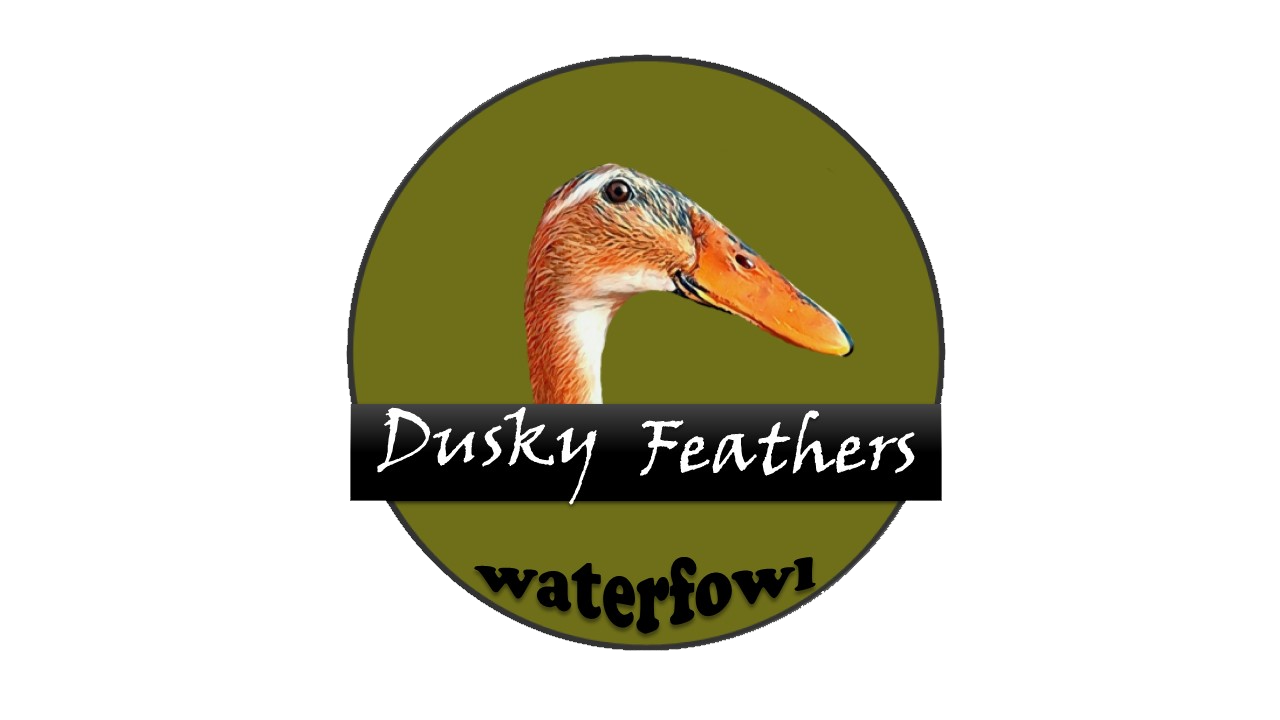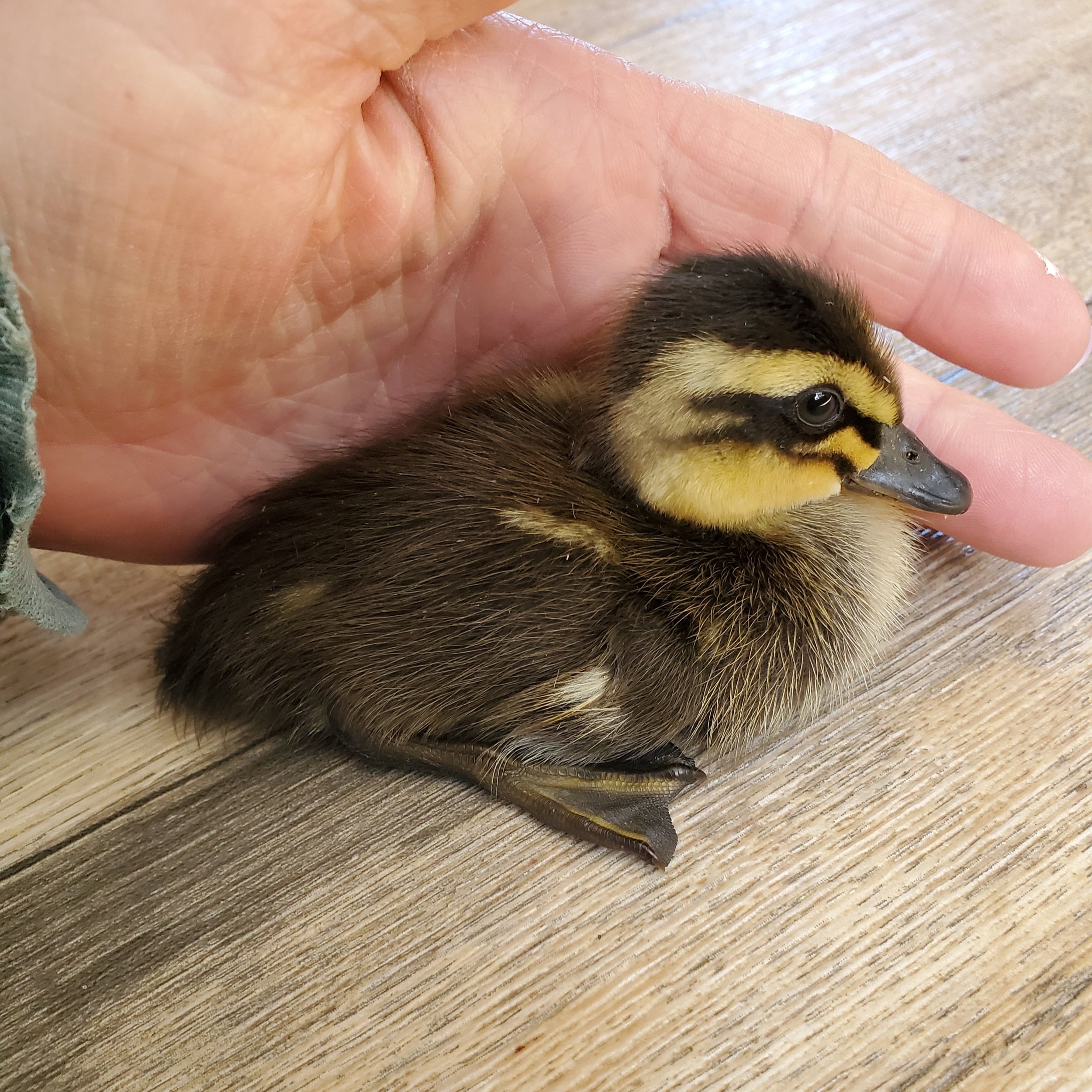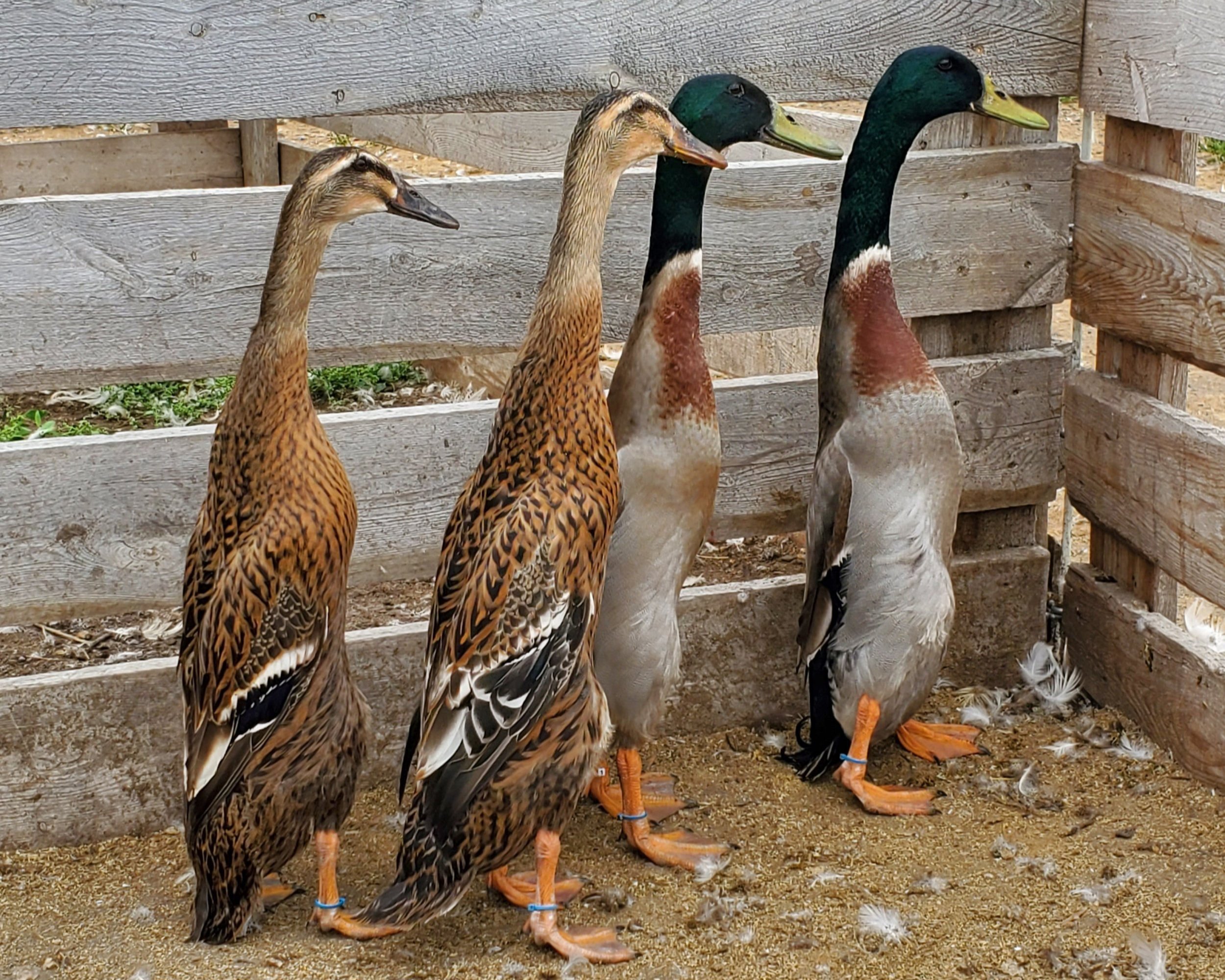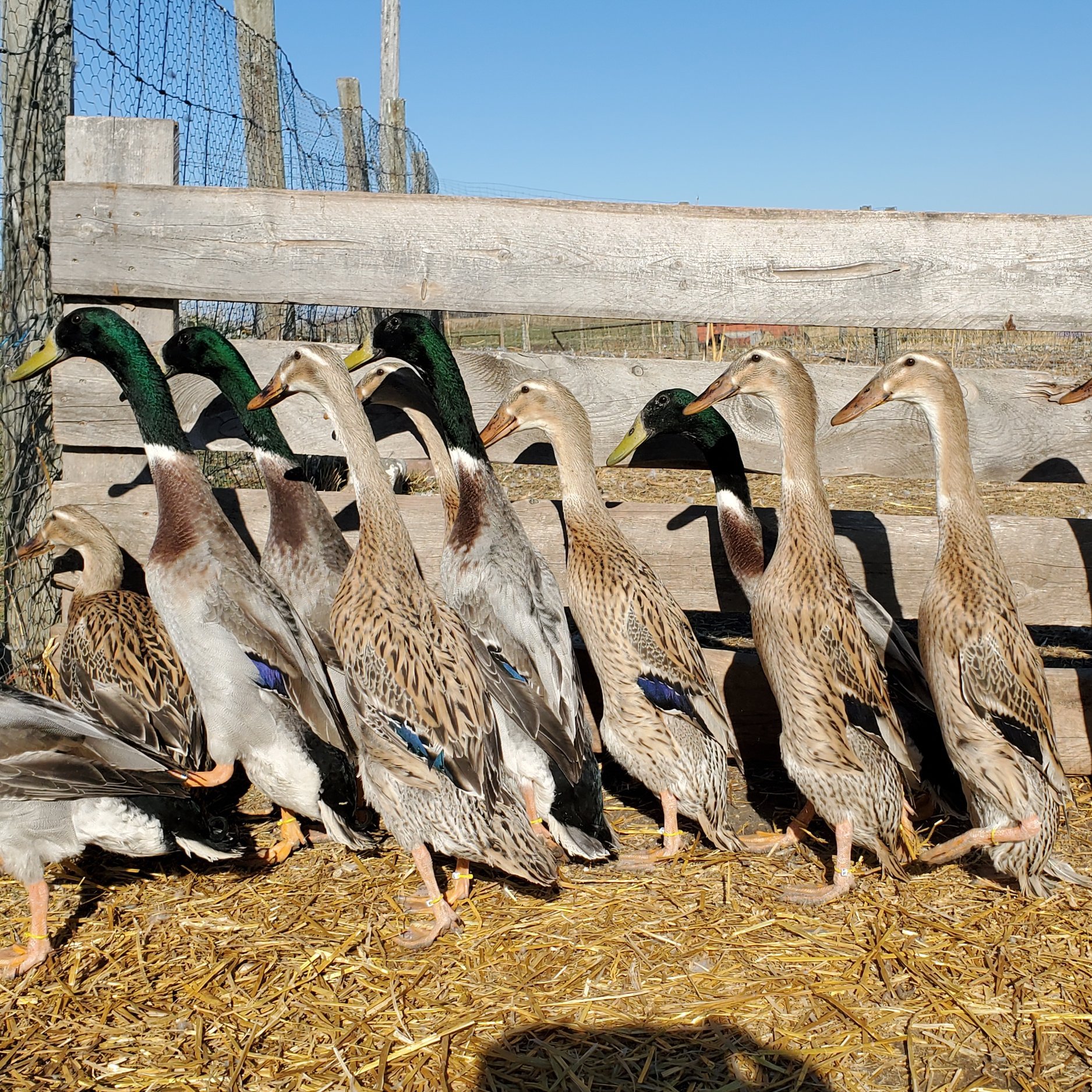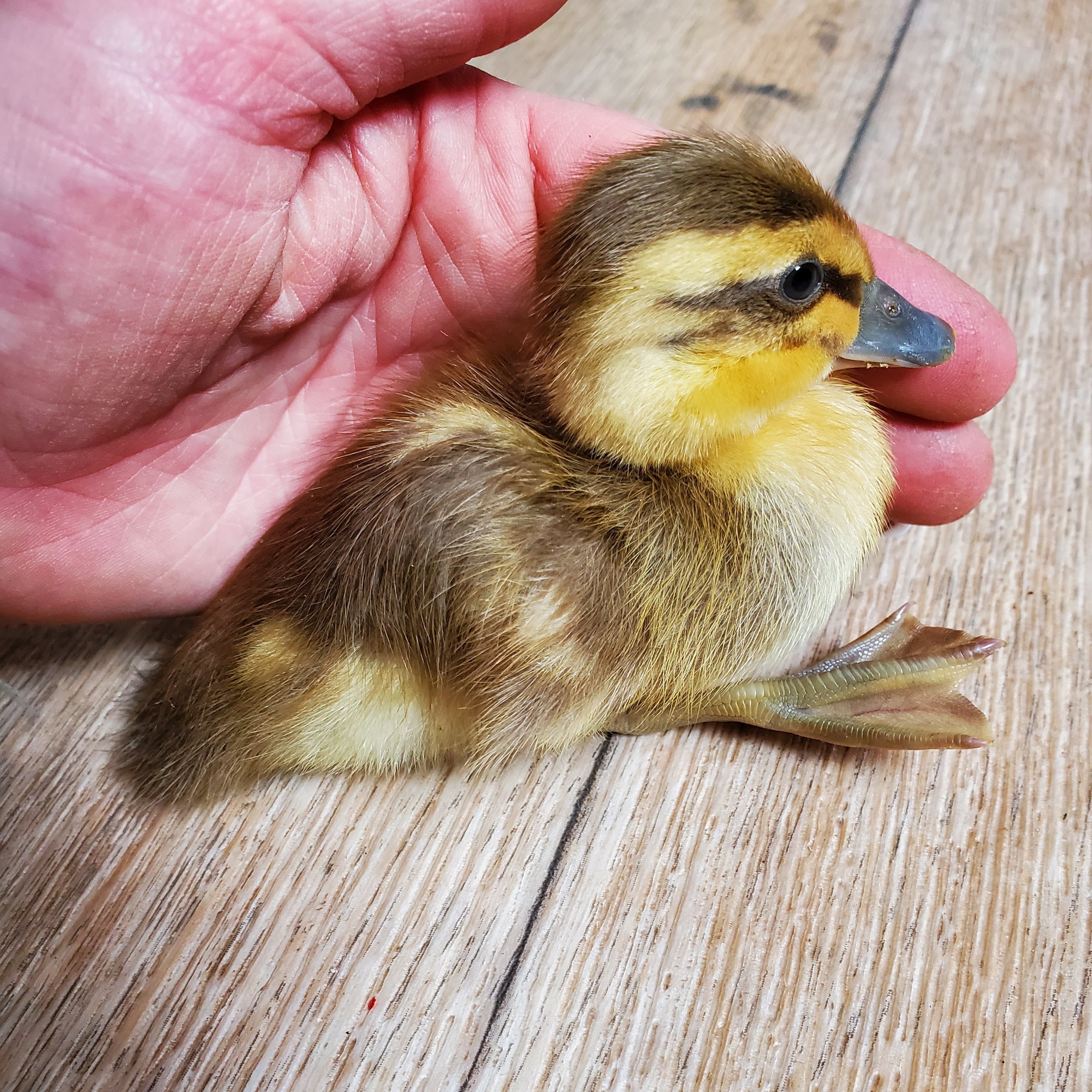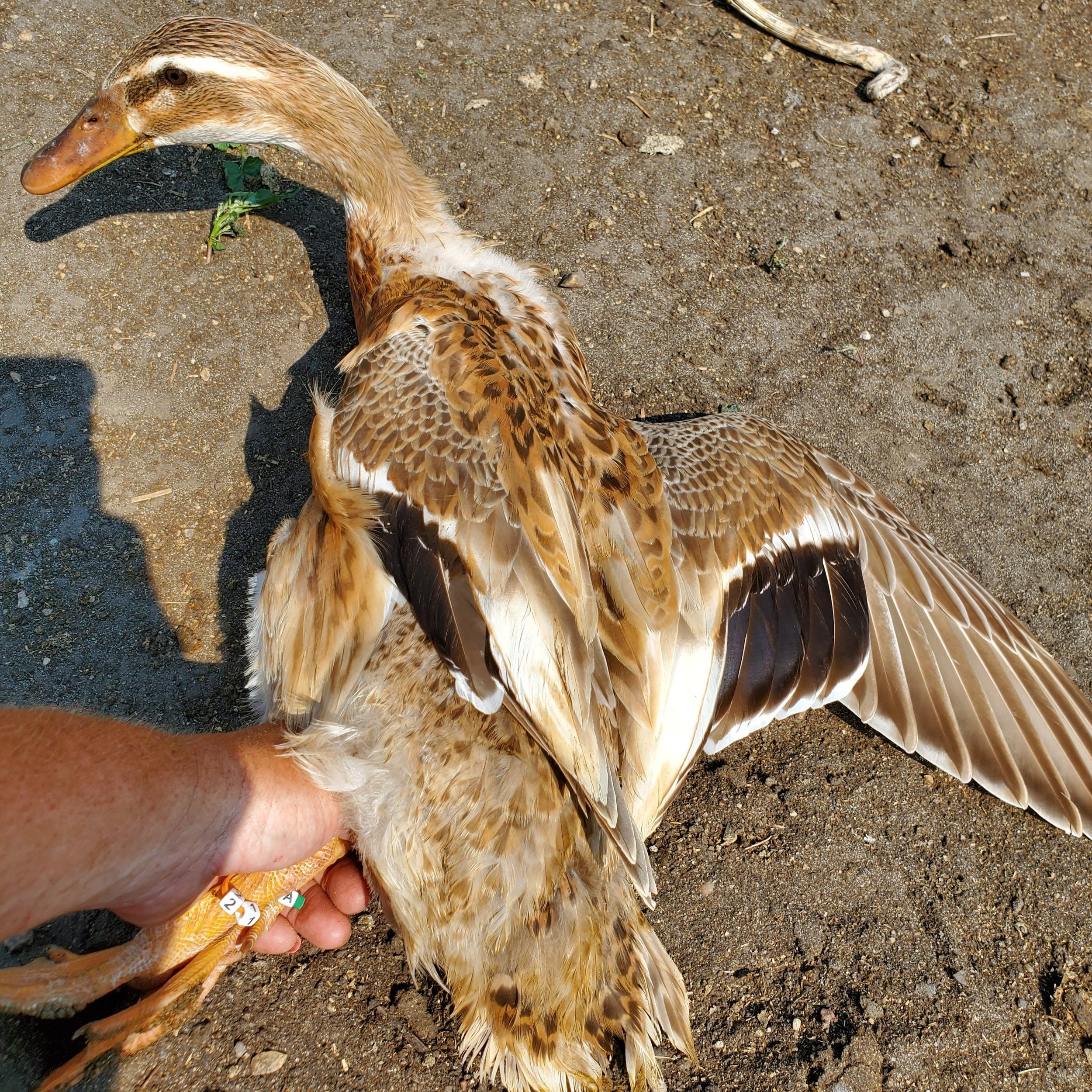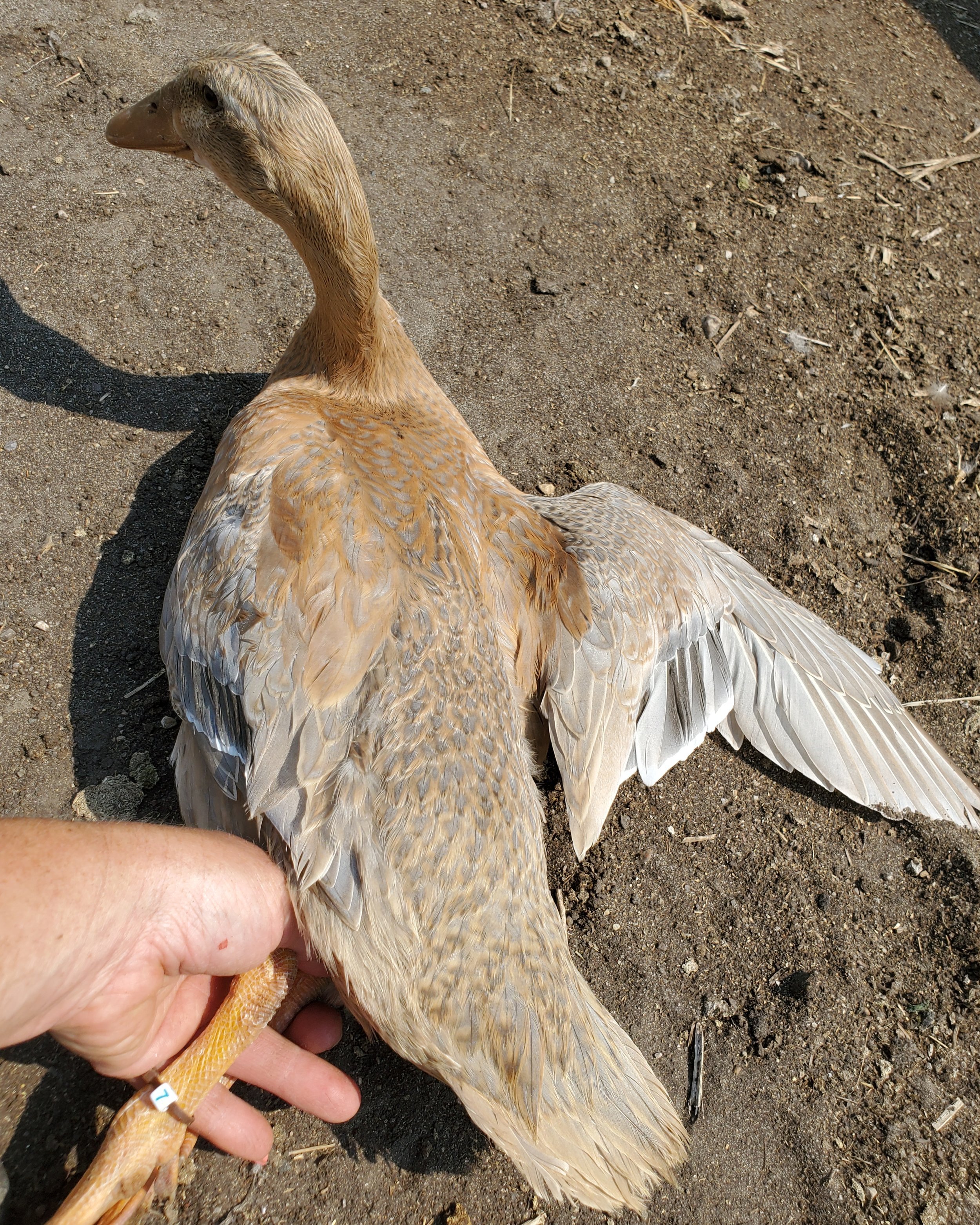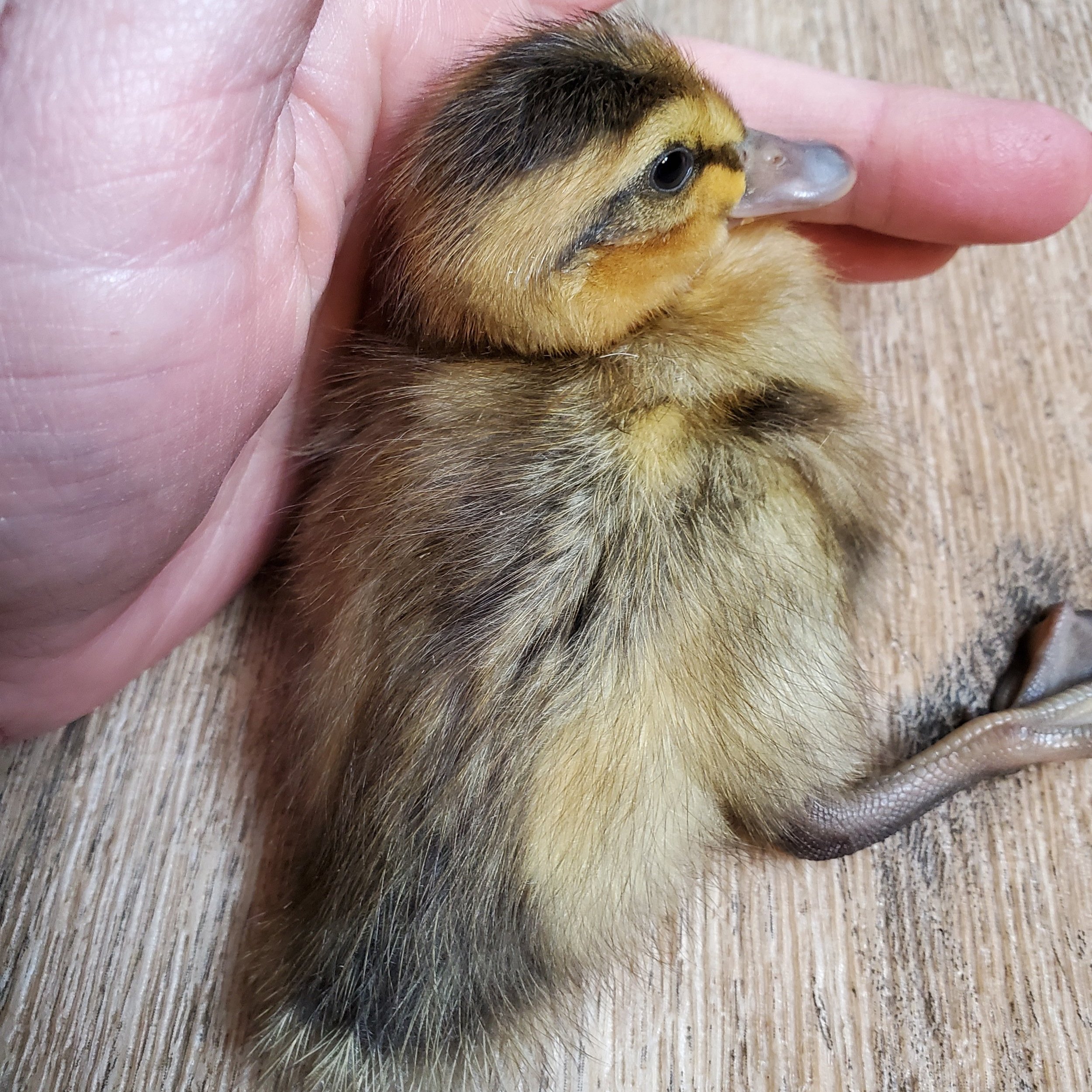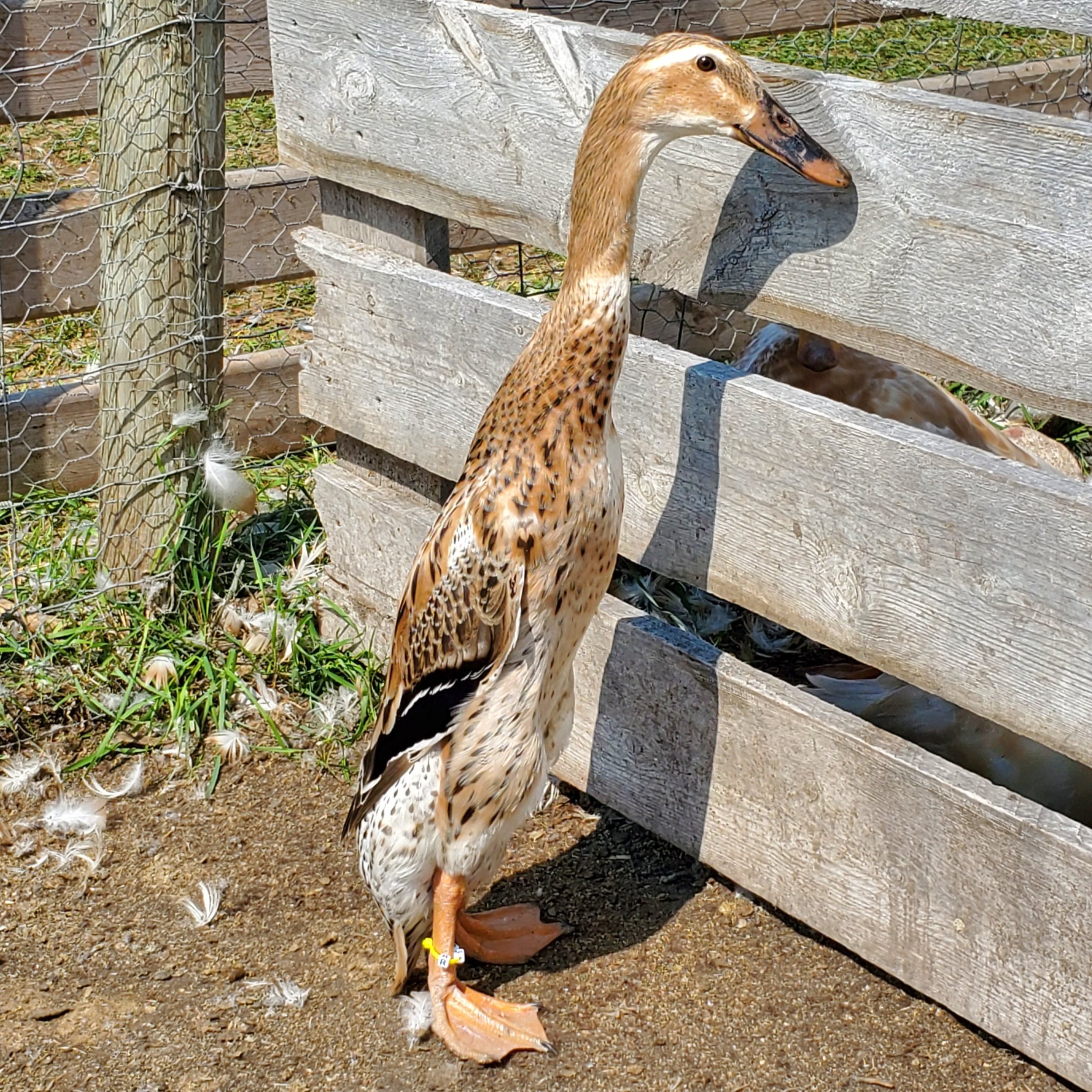The Mallard Pattern
(an allele on the Pattern Locus)The Mallard Pattern allele is so named because it causes the feather pattern of the wild mallard; the original duck color so to speak.
M+ is rather incredibly dominant and can hide a lot of recessive genes. But there are also genes that can change the way M+ looks. Among these are the alleles on the Phase Locus and the Blue and Brown dilution genes.
Some genes that can overpower M+ are the Black gene, the White gene (when homozygous), and the harlequin phase allele (a delicate recessive with a mighty punch when homozygous!)
What does the Mallard Pattern look like?
Like all other genes, the mallard pattern may look different depending on which other genes it is paired with. Remember that every duck has two alleles per locus…for every SINGLE color locus! That’s a lot of options! But there are some tell-tale signs that always show up.
eye stripes. All mallard pattern ducks have eye stripes. In drakes, you’ll only be able to see the eye stripes in juvenile and eclipse plumage.
Without blue or brown dilution, the wing speculum is brightly colored and iridescent, varying from blue to purple.
The underside of the wing is pure white!
Drakes have white collars and claret bibs.
Ducklings hatch with eye stripes and four yellow spots on their back.
(example of pure white feathers under wingColor play!
Color play!
Let’s get to the fun part and mix and match some of the other genetics with the Mallard Pattern gene and see what happens!
What will my duckling look like? The duckling down is a very good indicator of color genotype and phenotype!
Mallard Pattern/Dark Phase
Ducklings
Common names: Grey, Mallard
Genotype: M+/M+, Li+/Li+ (homozygous, pure)
Note: M+/md, Li+/li and M+/md, Li+/lih look just like the pure version!
Ducklings
ducklings have eye stripes; usually two and usually quite distinct.notice the four yellow spots on the backfeet are quite dark
Adults
females and juvenile males have eyestripes
both sexes have iridescent blue wing speculums
the ground color of females is a rich dark brown with black accents
drakes have iridescent green heads
drakes have white collars that gap in the back
drakes have solid claret bibs with defined edges
drakes have steel grey bellies and black rumps
Adults
Mallard Pattern/Light Phase
Ducklings
Common names: Trout, Rouen Claire
Genotype: M+/M+, li/li (homozygous, pure)
Note: M+/md, li/li looks just like the pure version!
Ducklings
two eye stripes are thinner than in dark phase.the four yellow spots are bigger. All the yellow areas are bigger.feet are paler than in dark phase
Adults
females and juvenile males have eyestripes
both sexes have iridescent blue wing speculums
the ground color of females is a warm tan with black accents
drakes have iridescent green heads
white drake collars still gap in the back but are broader
drakes have solid claret bibs with defined edges
drake bellies are a paler grey; rumps are still black
Adults
(example of female trout wing)
Mallard Pattern/Light Phase with Brown
Ducklings
Common names: Brown Trout, Golden Trout
Genotype: M+/M+, li/li, d/d (homozygous, pure)
Note: M+/md, li/li looks just like the pure version!
Ducklings
eyestripes as in non-brown version.dark down areas are a warm brownfeet have a brownish tint
Adults
females and juvenile males have eyestripes
wing speculums have an iridescent bronze glow
the ground color of females is a pale tan with brown accents
drakes have iridescent bronze heads
drakes have white collars and claret bibs as in non-brown version
drake bellies have a brown tint; rumps are brown
Adults
Mallard Pattern/Light Phase with single Blue
Ducklings
Common names: Blue Trout
Genotype: M+/M+, li/li, Bl/bl+ (heterozygous, will not breed true)
Note: M+/md, li/li looks just like the pure version!
Ducklings
eyestripes as in non-blue version.dark down areas are soft grey/bluefeet have a lavender tint
Adults
females and juvenile males have eyestripes
wing speculums are grey/blue with NO iridescence
the ground color of females is a pale tan with grey/blue accents
drakes have dark grey/blue heads
drakes have white collars and claret bibs as in non-blue version
drake bellies are a pale grey; rumps are grey/blue
Adults
Mallard Pattern/Light-Harlequin Phase
Ducklings
Common non-standard names: Spotted
Genotype: M+/M+, li/lih (heterozygous! will not breed true)
Note: M+/md, li/lih looks just like the pure version!
Ducklings
often there is only one dark line through the eyethe four yellow spots are still visible but almost blend with all the other very expanded yellow areas giving an almost smoky effect.feet are even paler than light phase
Adults
females and juvenile males have eyestripes
both sexes have iridescent blue wing speculums
the ground color of females is paler moving to white near the tail; black accents are tiny thin lines
drakes have iridescent green heads
white drake collars are broad and encircle the whole neck
drakes have frosted claret bibs with fringed edges
drake bellies are nearly white; rumps are still black
Adults
Note: I don’t have very many ducks like this so I am lacking a good drake image…
Mallard Pattern/Harlequin Phase
Ducklings
Common names: harlequin, snowy, abacot, silver (UK)
Genotype: M+/M+, lih/lih (homozygous, pure)
Note: According to many observations, when lih is homozygous, the position of the Pattern Phase doesn’t matter as lih/lih expresses the same.
Ducklings
no evidence of eyestripesyellow down with smoky smudgesfeet are very pale
Adults
no evidence of eyestripes
both sexes have iridescent blue wing speculums
the ground color of females is nearly white
drakes have iridescent green heads
white drake collars are broad and encircle the whole neck
drakes have frosted claret bibs with fringed edges
drake bellies are nearly white; rumps are still black
